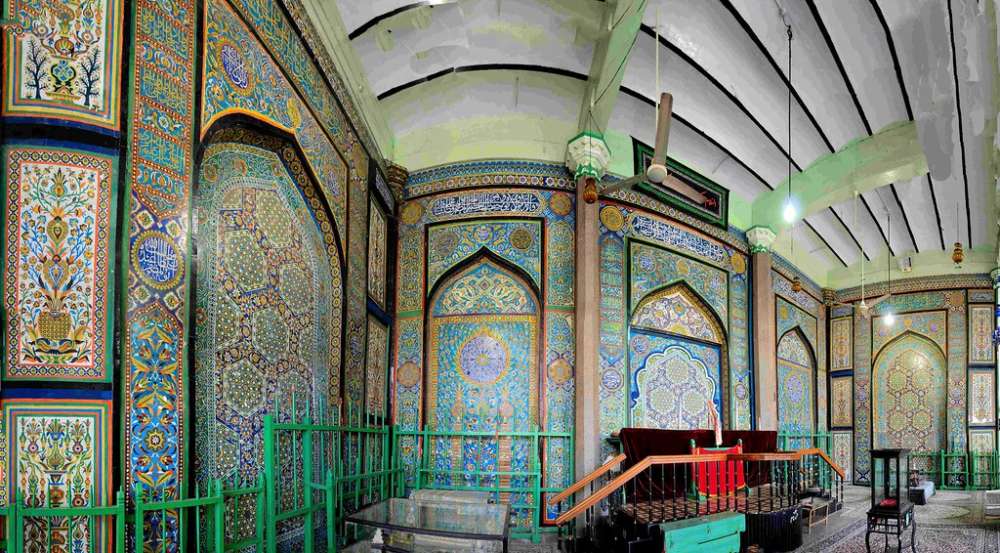
Hyderabad: After years of fighting for its protection, the state government has finally begun erecting a boundary wall for the protection of the historic Baadshahi Ashoorkhana, which is a house of mourning for Shia Muslims. Work on the wall had begun close to a week ago after the civic authorities took up work thanks to an ongoing case in the Telangana High Court pertaining to the monument.
The Baadshahi Ashoorkhana has been a victim of encroachments in the past, which were all cleared thanks to an older order from the state high court. Currently, the monument, which was originally designed with Persian mosaic tiles, is also undergoing restoration. It is a signifiant part of the Hyderabad’s heritage as it is the second oldest monument, the construction of which began a year after Hyderabad was founded in 1591 by Mohd Quli Qutb Shah.
However, getting the boundary wall to protect the open space from encroachments was also not easy, as unruly local elements tried to disrupt the construction work. Mir Abbas Ali Moosavi, the Mutawalli Mujawir of the Baadshahi Ashoorkhana, said that the issue of the outside fencing was important as it is part of the historic monument.

The Mutawalli Mujawer of the Baadshahi Ashoorkhana in 2022 had written to various departments stating that if the boundary wall of the Baadshahi Ashoorkhana is not erected again, there is a possibility that the outer area of the monument may be encroached by the ”politically influenced encroachers”. Moosavi then also claimed that former encroachers of the place were trying to erect a religious (Islamic) flag of a different sect, after the historical structure’s outer boundary wall was partially taken down by the water board under the pretext of taking up sewer works.
Significance of the Baadshahi Ashoorkhana
The Baadshahi Ashoorkhana is the second structure built in Hyderabad after the city was founded by Mohd Quli Qutb Shah (fourth king of the Golconda dynasty) in 1591. The monument, which is a Shia Muslim mourning place, primarily used during Muharram, goes back to 1592. It is a very important heritage site given that it was built by the founding king himself, and it still continues to be in use.
Like other Ashoorkhanas, this one too saw bad days for nearly a century after the Qutb Shahi dynasty fell to Aurangzeb’s army in 1687. The Qutb Shahi kings of Hyderabad were Shia Muslims. It wasn’t until Nizam Ali (the second monarch of the Asaf Jahi dynasty) came to power that the Baadshahi Ashoorkhana was given an annual grant.
An Ashoorkhana is where Shia Muslims mourn during Ashoora, the 10th of Muharram. The place is dedicated to Imam Hussain, a grandson of the prophet Muhammad who was killed in the battle of Karbala. Hussain was the son of Imam Ali, the prophet’s son-in-law (and cousin). This year Muharram began on July 7, and processions on July 17 will be held to mark the martyrdom of Imam Hussain.

